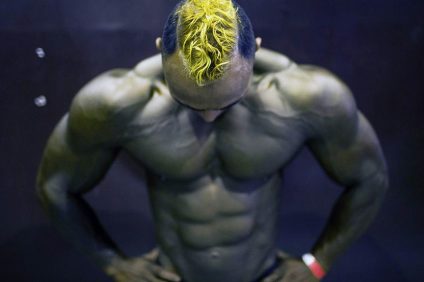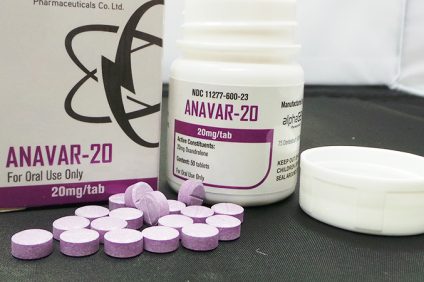Content:
- Why do you need to do the reverse hyperextension?
- The benefits of exercise
- Proper form tips
- Possible variations
- Execution Features
- Can I do reverse hyperextension with back problems?
Why do you need to do reverse hypers?
Among back exercises, hyperextension (back extension) and reverse hyperextension is quite popular as every second gym-goer has problems with the back: kyphosis, scoliosis, lordosis, etc. The main reason for such common diseases of the back is a sedentary lifestyle. Strength exercises for mass gain (bench press, squats, deadlifts) of the lower back muscles are subjected to static stress, which, accumulating, leads to cramps, causing back pain.
To get rid of pain, the lumbar is useful to strengthen. In addition, in basic training, he stabilizes the body. Reverse hyperextension serves this purpose, which involves the biceps of the thighs (hamstrings) creatine on non-workout days, gluteal muscles.
But the main driving force is the extensor muscles of the spinal column, stretching along the entire length.
The muscles involved in the work in a reverse hyper machine:
- target is the gluteus maximus muscle;
- synergists are the biceps of the hips;
- extensors of the back serve as stabilizers;
- oblique and rectus abdominal muscles – antagonist stabilizers.
The picture below shows the complete atlas of muscle reverse hyperextension:

The benefits of reverse hyper
Reverse hyperextension has several advantages:
- strengthens the lumbar muscles;
- corrects posture;
- increases the strength of the extensor back;
- simultaneously loads 3 muscle groups: extensors of the back, biceps of the hips, buttocks;
- the growth of power in the baseline in bench presses squats;
- unloads the spine, removes the “office” clamps;
- ease of performing reverse hyperextension (even at home) and safety.
Hypers proper form tips
As you will see, this is a very simple exercise.
Step one. Lie on the bench with your stomach so that the pelvis is on it, and your hips/legs hang down but do not touch the floor. Hands hold on the sides of the bench, bringing together the shoulder blades. This is the starting position.
Step two. Take a breath, and on the exhale, lift straight legs horizontally with the body (or higher), fixing the position at the endpoint by a couple of counts and squeezing the buttocks. Gently lower the straight legs into the sp.
Step three. Repeat the training as many times as necessary (set) shocking the muscles.
Reverse hyperextension variations
Reverse hyperextension and variations are used by athletes who want to pump their backs, along with the classic look:
- in simulators;
- on a bench with an angle of 45 degrees;
- bending the legs high incline bench press;
- on fitball.

Reverse hyperextensions execution Features
To achieve the maximum effect of reverse hyperextension, it is important to remember and follow the tips:
- the body does not move during movement;
- up and down legs move slowly;
- range of motion is fully utilized;
- tightly compress the gluteal muscles at the endpoint;
- watch your breath (do not hold it);
- You can do the exercise at the end of the workout or before the main load, as warming up;
- the repetition range lies within 3-4, and the repetition range is 10-15.

Reverse hyperextension is good for people with back problems
Often they decide to go to the gym when there is no choice, i.e. they have a disappointing diagnosis. Hearing the verdict, a person resists the disease, trying to restore health by training in the gym.
If “problems” in the back are diagnosed (weakness of the lumbar muscles, scoliosis, pain, etc.), doctors sometimes prescribe reverse hyperextension to patients. In medical literature, reverse hyperextension is called therapeutic training for the lower back. In addition to the positive effect: the achievement of activity of the spine and lower back, reverse hyperextension and variations showed a high level of EMG activity of the gluteal muscles and popliteal.
This indicates that reverse hyperextension serves as an athlete not only for the prevention of back muscle injuries but also gives a bonus – bodybuilders lifestyle and the study of muscle groups mentioned above.
Based on the foregoing, it turns out that reverse hyperextension is useful for strengthening the back muscles and preparing it for “serious” training, adjusted for the actual physical form protein formula for muscle gain. That is, it is impossible to talk about the mandatory inclusion of reverse hyperextension in the training program of each athlete.





